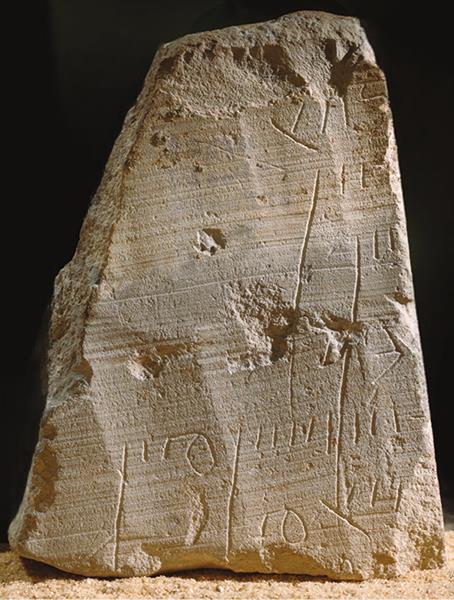
During a salvage excavation in the City of David, archaeologists from the Israel Antiquities Authority discovered a fragmentary inscription dating to the first century BCE or CE. Written on the lid of an ossuary (burial box), the inscription might be a receipt connected to the ossuary itself or a sales record by the craftsman.
The small inscription measures 3.5 by 2.5 inches and contains just seven lines of text, written in the cursive Aramaic script used in Judah during the first century.1 It lists a man named Shimon, one of the most common Jewish names of the Second Temple period, preceded by the letter mem, a shorthand form of the Hebrew word ma’ot (“money”). It was not carved by a trained scribe, but perhaps by a local businessperson.
The slab was recovered from an old tunnel created in the 19th century that is now part of the City of David’s Pilgrimage Road project. The controversial excavation, which tunnels beneath a modern Jerusalem neighborhood, follows the path of the city’s ancient pilgrimage road that connected the Siloam Pool to the gates of the Temple Mount.
Already a library member? Log in here.
Institution user? Log in with your IP address.

